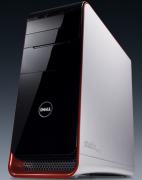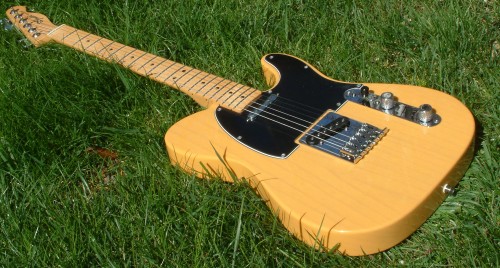I put new strings on the bass this week, in preparation for cleaning up Playing with the Big Boys. Now it’s practice time, gotta build up those callouses again.
Category: Studio Diary (Page 17 of 23)
I was uploading Head In The Game yesterday and, upon listening to the mp3, I decided there were a couple of places the drums could be improved. So I tightened them up. No, I will not tell you whereabouts in the song it was.
I’ve finished the Telecaster tracks on GodProg:Enlightenment, and moved on to :Omnipotence.
There’s something about the Telecaster… it just sounds so great. In some ways it is sad to replace the existing tracks, which feature the Ibanez 540s, my old faithful. But it’s all about the tone, and the Telecaster’s got it.
The end of the track has a solo in some freaking strange time signature, reminiscent of Siberian Khatru but I don’t care.
The GodProg suite is slated for Album#2 so technically I’m not supposed to be working on this yet. But the only way I’ve found to keep moving forward is to follow the muse.
Still following the muse on this “God Program” suite. I’m working on a section called “Enlightenment” with guitars. The Telecaster continues to shine.
This little piggy, thinks he deserves an upgrade. – The Prodigal Sounds, “The God Program”
ROSSINI is the name I have given to my new Digital Audio Workstation computer. It’s a Dell Studio XPS 9000, with an i7-920 processor and 8 GB RAM running 64-bit Windows 7.

First, the good:
It’s a great case, with plenty of room. I specifically ordered it with only one hard drive. My older DAW, KABUKI, has two hard drives: the OS and software lives on the primary disk, and the SONAR projects and music archive and related files reside on the second. My plan was to lift drive 2 out of KABUKI and install it as the second drive in ROSSINI. This plan worked perfectly.
There was one drawback (dawback?): I also transplanted the PCI audio interface (M-Audio Delta 66) from KABUKI into ROSSINI, but ROSSINI only has one PCI slot, and it is right at the edge of the motherboard, which means that the back panel – the metal strip with the connections on it – is located in the last available slot, right at the bottom of the tower case. The 15-pin D-connector couldn’t actually be plugged in because the curved plastic base panel of the tower case overlapped too far, preventing the plug from aligning with the socket.
You can sort of see where I’m talking about, in this picture from the Dell web site:

Not a problem: Set big-ass soldering iron to “imolate” and perform case mod. Now there is a nice (well, “scorched”) cutaway in the plastic lip, just the right size for the D-connector.
One reason for the upgrade is because M-Audio finally came out with 64-bit drivers for the Delta-66 (and the other interface I use, the Midisport 2×2 USB). I love the Delta, it’s been rock-solid under Windows XP in KABUKI for the last 5 or so years, so I didn’t see the point in upgrading until I could go fully 64-bit.
A word about Windows 7. I’m only using it because I want 64-bit. Under Windows XP, even if I had maxed out the computer with 4 GB RAM, Cakewalk’s SONAR could only access a maximum of 3.5 GB, and of course it is sharing the 4 GB with Windows itself. Under 64-bit windows, any 32-bit process can access a full 4 GB, if available. And of course, a 64-bit native application is not limited at all.
SONAR 8.5 is available in both 32-bit and 64-bit versions, but I am planning on sticking with the 32-bit version for now. I use a lot of 32-bit plugins – VST and DXi effects and synthesizers – that, although they would probably mostly work in 64-bit SONAR, would require a translation layer. I’m fine with the 32-bit version. A 4 GB memory limit is still more than twice what I was getting on KABUKI. In upgrading to ROSSINI, my sonar projects also have twice as many processor cores to abuse. (KABUKI was dual-core, ROSSINI’s i7-920 has four cores – eight if you count hyper-threading which I’m not sure that I do).
So far, everything is running O.K, although I suspect some kind of memory leak is going on, possibly in the audio driver. After about 30 minutes of working and recording takes, I get a nasty burst of digital noise every time I press RECORD and SONAR stops playback. Well, it keeps advancing along the time line as though it *was* playing back, but no sound is emitted. I’m still working on diagnosing this – there are a lot of places the problem could be stemming from.
I have a theory that every competent electric guitarist will, at some point in their careers, inevitably enter into an affair with the Telecaster.
Leo Fender’s prototypes were constructed in 1949 and the instrument was originally dubbed “the Broadcaster”. The name was changed in 1952 for the mass-produced model, but this was accompanied only by minor refinements to the design. It’s almost as if the archetypal electric guitar emerged fully-formed from the forehead of Zeus.
Arguably the World’s first electric guitar design, the Fender Telecaster has a clean, practical look and an honest simplicity that remains unchanged today: A solid body, bolt-on neck, with two single-coil pickups.
With a reputation for both a melodious twang and a raucous screech, the Telecaster is an unforgiving instrument – if you flub a phrase or miss a note, you can be sure your audience will notice. Despite these limitations, or strengths, the instrument has found devoted players in almost every genre of popular music, including Country, Blues, Rock and Jazz.
It’s also eminently hack-able – the affordability of the instrument and ability to hide numerous mistakes beneath its plastic scratch plate make it open to experimentation: Changing components, wiring, and even additional pickups.
Over the years, successful official variations on the basic design have been attempted by Fender, many of them very successful product lines in their own right, used by many talented musicians, and still available today: the T
hinline, the Deluxe, the 1972 Custom. But you will always be able to find the original Standard Telecaster hanging on the rack in any reputable guitar store. It’s a living fossil of the stringed instrument lineage: the “tuatara” of electric guitars*.
And so, if every competent electric guitarist will eventually enter into an affair with the Telecaster, then it is time I gave in to fate.
Here’s mine. Meet ‘Tara:

Beautiful, and eminently hack-able.
* OK, I know that strictly speaking, the term “living fossil” applies to species with no close living relative species. And clearly, I’ve just documented that the Telecaster is anything but that. Well, guess what: The tuatara isn’t strictly a living fossil either. So ‘Tara it is.
Recent Comments